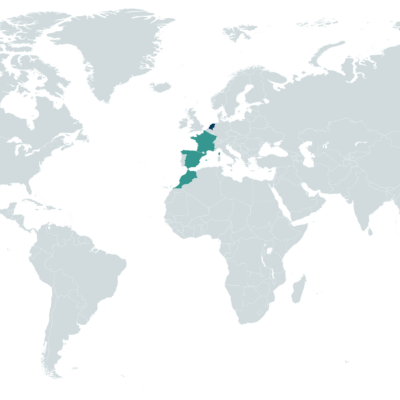BIODIVECITY – Greening cities as nature-based solution and their impact on vectors and vector-borne disease risks
Call
Duration
01/04/2025 – 31/03/2028
Total grant
approx. 900 thsd. €
More information
Sander Koenraadt
sander.koenraadt@wur.nl
Partners of the project
- Laboratory of Entomology, Wageningen University and Research, Wageningen, Netherlands
- Department of Pathology and Public Health, Institut Agronomique et Vétérinaire Hassan II, Rabat, Morocco
- Department of Biology, Health Care and the Environment, University of Barcelona, Barcelona, Spain
- French National Research Institute for Sustainable Development, Montpellier, France
- National Research Institute for Agriculture, Food and Environment, Montpellier, France
- Zoology and Animal Ecology, Mohammed V University, Rabat, Morocco
- The Netherlands Food and Consumer Product Safety Authority, Center for Monitoring Vectors, Wageningen, Netherlands

Context
Urbanization is increasing globally and is frequently associated with environmental disruptions that result in pollution, flooding, extreme heat, and biodiversity loss. The greening of cities represents a NbS that helps to promote sustainable cities. There is much evidence of the positive impact of green cities on people’s health and well-being. Moreover, urban greening contributes to the mitigation of climate change (e.g. by reducing heat island effects) and to restoring biodiversity. However, urban greening can also have an impact on the ecology of blood-feeding arthropods (e.g. mosquitoes, sandflies), and therefore on vector-borne diseases (e.g. West Nile fever, dengue, leishmaniasis). Indeed, the creation of new urban green zones can provide a suitable habitat for native vector species, but may also favor the introduction and establishment of invasive species (e.g. the tiger mosquito Aedes albopictus). In addition, it may affect access to a potential host or favor resting sites close to blood meal sources. Conversely, if properly designed, urban green spaces may provide opportunities for sustainable vector-borne disease risk mitigation in the city, by facilitating predation, competition, and dilution effects in the urban ecosystem.
Main objectives
The main objective of BIODIVECITY is to explore the relationships between public and private urban green spaces on the one hand, and diversity of blood-feeding arthropods and their implications for vector-borne disease transmission to humans and animals on the other.
Main activities
The BIODIVECITY project will explore the relationships between Urban Green Spaces (UGS) and blood-feeding arthropod biodiversity, as well as their implications for vector-borne disease transmission. We have formed a unique, multidisciplinary consortium (with partners from The Netherlands, France, Spain and Morocco) within which we are able to make comparisons across major urban centers in Europe. The consortium will develop a harmonized protocol for standardized ecological surveys, organize participatory workshops and citizen science activities to collect evidence on the impacts of urban greening on vector-borne disease risks and collaboratively develop policy guidelines and recommendations for mitigating potential disease risks. To address the multiple facets of urban greening, urban planners, policy makers, health stakeholders’ representatives, and civil society will be involved in the project. This will allow knowledge exchange and facilitate mutual learning, thereby ensuring the unique ability to derive transnational conclusions and policy recommendations.

